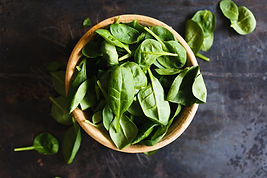
Dietary advice

What are the energies, flavors and other properties of food?
In modern nutritional science, foods are evaluated according to their structure, that is, according to their content of proteins, carbohydrates, vitamins and other nutritional values. In the Chinese diet (including herbs), however, foods are not evaluated according to their structure, but also on the food's energy, flavour and movement. We can illustrate this with an example: when we meet a new friend, who can be judged by known and visible facts such as their qualifications, race or height, but we can also perceive them according to their personality.
Other unique aspects of the properties of foods according to TCM theory are meridian tropism and general action. They refer to certain internal organs or meridians that can be affected by foods. Meridian tropism can be thought of as the internal destination of certain foods, while general action means that food will raise, lower, or store energy. For example, celery and sweet potatoes both affect the stomach, but differ in that celery is volatile while sweet potatoes are rich.
To summarise: modern nutritional science recognises the structure of foods, while ancient Chinese philosophy understands foods (and spices) according to their nature. According to TCM, foods and spices can be selected and prepared according to whether we want to raise the body's energy levels, cleanse the body or balance it.
Five types of food energy
Chinese tea is said to have "cold" energy, even though it is a warm drink. The energies of foods refer to their ability to create sensations in the body, whether hot or cold. The types of energy are cold, hot, warm, cool and neutral and do not refer to the state of the food, but to its effect on the body. For example, tea has a cooling energy, which means that it is a cooling drink by nature, even though the drink itself is hot. Soon after drinking hot tea, the heat starts to disappear quickly, and cold energy starts to be produced in the body, which cools the body down.
In the table below you can find some examples of foods with different energies.



It is important to know the energy of food, as individual energies have different effects on the human body and health. If someone has a problem with diarrhea due to a cold, foods with warm or hot energy will significantly help ease the symptoms. If a person suffers from rashes that worsen in the heat, it is helpful to eat as many foods with cool or cold energy as possible to alleviate the symptoms.
Food movement
Foods affect the body through a special movement. According to its properties, food moves through different parts of the body and can also bring qi energy to them. According to TCM, diseases arise when external pathogens affect the body too much. Foods with special movement can be used to keep these pathogens at bay. For example, when a person comes down with a mild cold caused by the invasion of outside winds, volatile foods such as green onions and fresh ginger can flush pathogens out of the body.
TKM divided the movement of foodstuffs into four groups.



In general, foods such as leaves or flowers, and light and loose foods move upwards or outwards. On the other hand, roots, seeds and fruits, which are heavy and hard foods, tend to move downwards and inwards. Of course, there are many exceptions. Some foods, however, can move in two directions: cinnamon, for example, can reach the deep level of the kidney system and bring fire energy to the surface.
The performance of foods can also be determined based on their smell and texture. Foods with a strong smell, such as mint, lemon and green tea, tend to float or rise, while sticky and dense foods, such as honey and berries, lower and decline.




